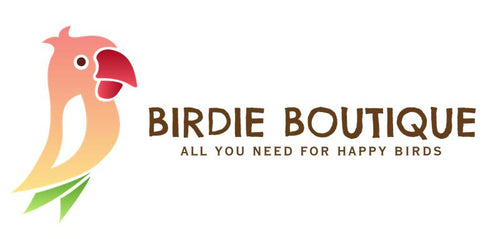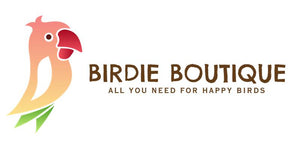Water Bottles & Birds
by Dr. Greg Burkett
Board Certified Avian Veterinarian
Why to Convert Your Bird to a Water Bottle. Bacterial infections are one of the most common health problems that veterinarians encounter in pet birds. The most common source of bacteria is the water dish. An open dish of water is a breeding ground for bacteria. When left for an extended period dishes will even grow algae. Organic materials such as food and poop contaminate the water and provide food for the bacteria, which accelerates their growth. Bacterial growth is measured in doubling time, which is the time it takes for bacteria to double in number. Doubling time for many bacteria is only 3-4 hours; so, a clean water dish that is given at 9:00AM will by 1:00PM contain enough bacteria in the water to potentially cause infection and illness. The presence of bacterial contamination is evidenced by the slimy coating on the inside of the dish, called a biofilm, which is a rapidly growing bed of bacteria. Bacterial growth in the water is a health hazard and dirty water is a deterrent to drinking enough to prevent dehydration.
Cleaning a water dish only once or even twice daily is not sufficient to guarantee clean water and prevent major health problems. An awaking rule of thumb is to assess whether or not you would drink the water from the dish. If not, you should not expect your bird to.
Bacterial contamination cannot be managed with water additives such as vinegar. Vinegar is an ineffective disinfectant and may cause birds not to drink the water. A water bottle will effectively prevent water-borne bacterial infections and provide continuous access to clean drinking water.
Most birds will dunk food, bathe, and poop in the water that they are expected to drink. Many owners are concerned that using water bottles will deprive their birds of these activities. Birds can be provided a bottle for clean drinking water and a separate bathing dish that is removed after bathing is over. A bathing dish can be offered regularly and should be removed within a couple of hours.
Birds are still able to wet their food using the water bottle by dispensing water with food in their beak. They are dependent on us and we owe it to them to provide the best care available. A water bottle as a bird’s source of drinking water is an important part of providing excellent bird care and husbandry, and being proactive in preventing disease. It is a vital part of a preventive health care program. There are no reasons not to put your bird on a bottle.
When using water bottles, a real concern is the possibility that the bottle will malfunction and fail to dispense water. When water bottles are managed properly this problem can be avoided; bottles are safer than drinking dirty water. To avoid these potential problems, it is imperative that water bottles be checked each time they are filled, and at least one other time each day. A good habit to develop is to check the bottle every time you walk by the cage simply by activating the drinker tip ball. The risk of a bottle failing is essentially eliminated by using these husbandry methods.
How to Convert Your Bird to a Water Bottle. The amount of effort needed to convert to a bottle is small compared to health benefits of drinking from a bottle. When converting your bird to a water bottle, there are some rules that should be used to have a successful conversion. Drinker tube size is an important consideration. If the tube is too small, birds will have difficulty getting water and may not convert. Your bird needs easy access to the drinker tube. If the tube is difficult to reach, your bird may not convert. The drinker tip should be mounted at your bird’s beak-height above a perch and positioned so water does not drip onto the perch. Perches that are constantly wet will develop mold growth.
Converting your bird to a bottle is easy; if hamsters can learn to drink from a bottle, then a bird should be able to. Sometimes simply showing birds where the bottle is in the cage and that it is a water source will be enough to get them to convert. Place your bird on the perch near the drinker tube and tap the ball on the end of the tube to demonstrate dispensing water. Your bird will be curious when water drips, the tube makes a noise, and bubbles emerge in the bottle. When your bird beaks the drinker tip, water will come out, and your bird will realize it is a source of water. You need to repeat this action if your bird does not respond immediately.
If both the bottle and dish are present in the cage, it will be less likely that your bird will convert. Remove the water dish from the cage when the bottle is introduced. Provide water in a dish every three to four hours outside of the cage only. Each time you return your bird to the cage, place your bird on the water bottle perch and demonstrate the water bottle. Continue to offer a water dish only outside of the cage until your bird is consistently drinking from the bottle. You will know that your bird is drinking from the bottle if your bird does not drink from the dish, by observing your bird drinking from it, and seeing evidence of water on the cage bottom.
For Water Sources, Do Not Do not use water dishes as your bird’s drinking water source. Because water dishes are the most common source of bacterial infections in birds. In an official study at The Birdie Boutique, water dishes showed significant bacterial growth after only 3-4 hours. Changing dishes only once or twice daily is insufficient for preventing infections. Instead use water bottles, which are more sanitary. The study at The Birdie Boutique demonstrated that water bottles do not show bacterial growth before day 5. However, for the freshest water, bottles need to be changed every 24-48 hours.

